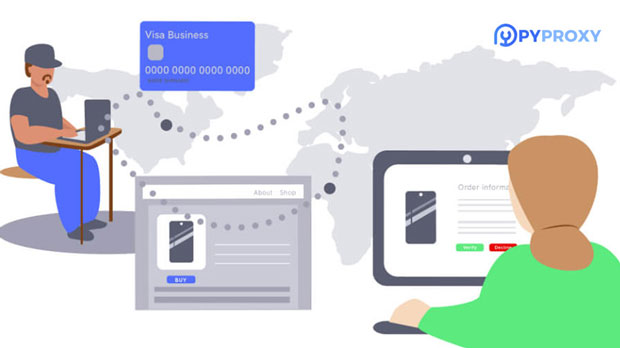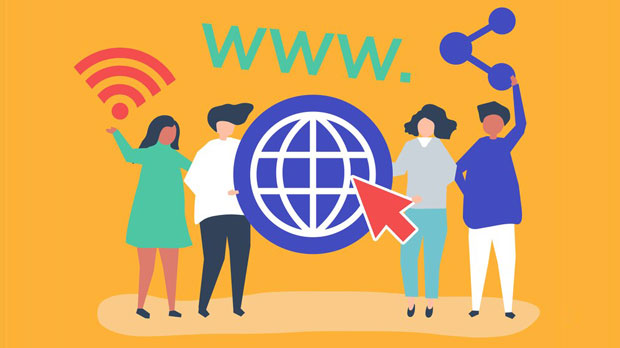When discussing proxy protocols, one of the most common questions that arises is whether the socks5 proxy supports the UDP protocol. SOCKS5 is a versatile and widely-used proxy protocol that provides several advantages over its predecessors. In this article, we will explore the specifics of the SOCKS5 protocol, its relationship with UDP (User Datagram Protocol), and the implications for users who rely on high-performance internet applications such as streaming, gaming, and VoIP. Understanding SOCKS5 ProxySOCKS5, or Socket Secure version 5, is a proxy protocol that allows clients to establish secure and private connections to the internet. It operates at a lower level in the network stack and handles data transmission between a client and a server. sock s5 proxies offer support for both TCP (Transmission Control Protocol) and UDP protocols, though the implementation of UDP within SOCKS5 proxies can be somewhat complex.How SOCKS5 Proxy WorksTo understand the integration of UDP, it's important to first grasp how SOCKS5 operates. SOCKS5 proxies facilitate client-server communication by acting as an intermediary that forwards network requests. This can help mask a user's IP address and improve security, making it a popular choice for users seeking to anonymize their internet traffic.Unlike traditional proxies, SOCKS5 does not manipulate or modify the data packets it forwards, which ensures a higher level of transparency and minimal latency. This characteristic makes it suitable for activities like online gaming, file sharing, and using applications that require low-latency communication.What is UDP (User Datagram Protocol)?UDP, or User Datagram Protocol, is a communications protocol used in IP networks to send messages, called datagrams, without establishing a connection. Unlike TCP, UDP does not perform error-checking, which makes it faster but less reliable. This is why UDP is typically used in applications where speed is crucial, such as live streaming, gaming, and VoIP (Voice over Internet Protocol).One of the key features of UDP is that it is connectionless, meaning that it does not establish a reliable communication channel between the sender and receiver. Instead, data packets are simply sent out, and the receiver is expected to process them as they arrive. This makes UDP more efficient for real-time applications where minor packet loss is acceptable but speed is of the utmost importance.Does SOCKS5 Support UDP?Yes, SOCKS5 supports UDP protocol, but with some important caveats. The original SOCKS5 specification was designed with TCP traffic in mind, as it focuses on ensuring reliable data transmission between client and server. However, over time, the protocol was extended to also support UDP traffic. The difference lies in the way the proxy server handles the two types of traffic.For TCP traffic, the socks5 proxy server can guarantee the order and integrity of the data packets. This is due to the nature of the TCP protocol, which ensures reliable data transfer with mechanisms like flow control and retransmission. However, for UDP, the SOCKS5 proxy server acts primarily as a "tunnel" that forwards the data packets without any guarantee of delivery or order.In simple terms, while SOCKS5 can handle UDP traffic, the server does not provide the same level of reliability or error-checking that is available for TCP. This means that while UDP traffic can be sent through a SOCKS5 proxy, it may experience issues such as packet loss or delays depending on the quality of the connection and the implementation of the SOCKS5 proxy.Benefits of Using SOCKS5 with UDPDespite the potential challenges with reliability, using SOCKS5 for UDP traffic can still offer several advantages for users in certain situations.1. Improved Privacy and Security: By using a SOCKS5 proxy, users can mask their real IP address and encrypt their internet traffic. This is especially valuable when using UDP-based applications like gaming or VoIP, as it helps prevent data leakage and protects user identity.2. Bypassing Geographical Restrictions: For users looking to access content that may be geo-blocked, such as streaming services or online games restricted to specific regions, SOCKS5 proxies provide a way to bypass these restrictions. UDP traffic can be routed through a SOCKS5 proxy server, allowing users to access content from different geographical locations.3. Reduced Latency: UDP is often used in applications where low-latency communication is critical. While SOCKS5 does not introduce significant overhead compared to other proxy protocols, it can still provide some improvement in latency, especially if the server is located closer to the user or optimized for high-speed connections.Limitations and Challenges of Using SOCKS5 for UDPWhile SOCKS5 proxy supports UDP, there are several limitations to consider:1. Reliability: UDP is a connectionless protocol, and SOCKS5 does not offer the same level of reliability for UDP traffic as it does for TCP. As a result, packet loss or out-of-order delivery may occur, which can affect the quality of real-time applications such as VoIP calls, gaming, and video streaming.2. Performance Impact: Although SOCKS5 is generally known for its low overhead and efficiency, routing UDP traffic through a proxy server can still introduce additional latency, especially if the server is located far from the user or is not optimized for UDP traffic.3. Limited Support: Not all SOCKS5 proxies support UDP, and even those that do may not fully implement the protocol or may only support it under specific conditions. It's important for users to verify that their proxy provider supports UDP traffic and to choose a high-quality proxy server optimized for this type of communication.Use Cases for SOCKS5 with UDPDespite the limitations, there are several scenarios where using SOCKS5 for UDP traffic is beneficial:1. Online Gaming: Many online games rely on UDP to maintain low-latency communication between players. By routing UDP traffic through a SOCKS5 proxy, gamers can enjoy greater privacy and avoid IP bans or throttling from their Internet Service Provider (ISP).2. Streaming and VoIP: Services like VoIP and live streaming benefit from the speed and efficiency of UDP. SOCKS5 can help ensure that these applications remain functional while also providing an additional layer of security and privacy.3. Bypassing Network Restrictions: For users in countries or regions where internet censorship is prevalent, SOCKS5 proxies can be used to bypass restrictions on UDP-based services like gaming servers or media streaming.ConclusionIn summary, SOCKS5 proxy does support UDP, though its implementation comes with specific challenges. While SOCKS5 provides a higher level of privacy and security compared to other proxy types, the reliability of UDP traffic through SOCKS5 may be compromised due to the connectionless nature of UDP and the lack of error-checking in the protocol.For users who rely on UDP for real-time applications, such as gaming, VoIP, and streaming, SOCKS5 can still be a viable solution, but they must be aware of potential packet loss or delays. It’s important to choose a high-quality proxy server that fully supports UDP and to understand the limitations of the protocol to optimize performance.Ultimately, SOCKS5 proxies remain an effective and secure way to route UDP traffic, provided that users understand both the benefits and the challenges associated with using them.
Jun 30, 2025



































































